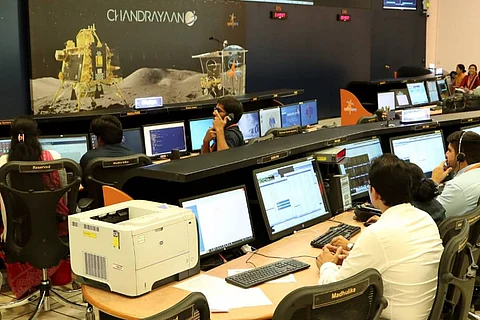

The successful moon landing on August 23 has come as a booster shot for the officials of the Indian Space Research Organisation (ISRO), which is now gearing up for a mission to the Sun. India on Wednesday evening successfully landed its moon lander near the South Pole of the moon. Speaking to reporters, ISRO Chairman S Somanath said the Aditya-L1 satellite for the Sun mission will be launched during the first week of September.
According to him, the coronagraphy satellite will take about 120 days to travel about 15 lakh km to reach its destination to study the solar atmosphere. The Aditya-L1 spacecraft -- the first space-based Indian observatory to study the Sun -- is getting ready for the launch at India’s rocket port in Sriharikota.
According to the ISRO, the spacecraft will be placed into a halo orbit around the first Lagrange point, L1, of the Sun-Earth system. The satellite around the L1 point has the major advantage of continuously viewing the Sun without occultation/eclipses. The Aditya-L1 satellite -- named after the Sun God -- will be carried by the Indian rocket Polar Satellite Launch Vehicle (PSLV). The satellite will be shortly integrated with the rocket.
The Sun mission will be followed by the Gaganyaan abort mission demonstration, which is part of India’s human space mission. The Gaganyaan abort mission will happen during September end or during the first week of October this year, Somanath said.
The Indian space agency is also planning to orbit the INSAT 3DS satellite with its GSLV rocket this year, Somanath added.
After that, there will be the orbiting of Anwesha satellite and XPoSAT–an X-Ray Polarimeter Satellite. It will be the country’s dedicated polarimetry mission to study the dynamics of bright astronomical X-ray sources in extreme conditions, the government said.
The launch of the Radar Imaging Satellite - RISAT-1B - aboard the PSLV rocket is planned for 2023. The Indian space agency is also planning to orbit two IDRSS (Indian Data Relay Satellite System) satellites.
These rocketing missions apart, ISRO will be testing the various systems that will go into its LVM3 rocket for its first human space mission. ISRO has also slated a flight to Venus -- Venus Mission -- in 2024.